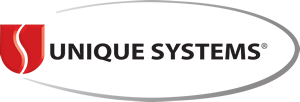Waterbox Priming Systems

3PTM-90-FR Waterbox Priming System During Final Assembly & Painting
Liquid ring vacuum pumps have been employed for removing air from main condenser waterboxes for the past 40 years. In the Waterbox Priming application, vacuum pumps evacuate air and any other non-condensable gases from the cooling water piping and waterboxes of the main condenser that services a steam turbine. Lowering the pressure in the waterbox enables the cooling water to be forced up into the waterbox by the atmospheric pressure in a manner similar to the way a barometer functions. This greatly reduces the amount of energy needed to pump the cooling water up into the waterbox and allows cooling water circulation pumps of lower horsepower rating and discharge head pressures to be used. Savings are achieved in both initial capital and operating costs.
In addition to initial priming, a liquid ring vacuum pump priming system also removes dissolved gases that come out of solution in the cooling water, preventing trapped air and other non-condensables from accumulating in the cooling water circuit.
System capacity is determined by the requirements of the customer. Vertical lift height required for priming determines the suction pressure. The volume of waterboxes and associated piping, together with desired time to evacuate, determines capacity. A typical vacuum pump system for waterbox priming service consists of two identical 100% capacity pumps mounted on a common skid. It is common practice to use both pumps simultaneously to evacuate (or “hog”) the condenser waterbox and piping to the point where one pump shuts down, while the other continues until the ultimate suction pressure needed for priming is achieved. A single pump cycles on/off as needed to remove any dissolved gases that come out of solution during operation.
Unique Systems vacuum pump priming systems typically use one-stage liquid ring vacuum pumps. Please refer to our section on Liquid Ring Air Removal Systems for a detailed description of pump design and operating principles. Both pumps operate “automatically” to evacuate the condenser waterbox to a pressure determined by the requirements of the condenser elevation. At this point, the system pressure switch sends a signal to shut-down the “lag” pump, while the “lead” pump continues operating in holding-mode.
Figure 1 shows a typical one-stage liquid ring vacuum pump priming system process flow diagram. In hogging and holding mode operation, the pump pulls air into the inlet to the vacuum tank. The volume of the vacuum tank is sized to provide additional capacity, which acts as a reservoir, to prevent short-cycling of the pumps. The air then enters the pump and is compressed by the action of the liquid ring. Any water vapor is condensed in the liquid ring and an air-water stream is discharged into the separator tank. The air exits through the vent, while the water drops to the bottom of the separator tank to be re-circulated through the system heat exchanger and finally back into the vacuum pump with the seal water.
Figure 1:
Typical Duplex Liquid Ring Vacuum Pump Priming System Flow Diagram

Optimized Pump Performance
Proper sizing of vacuum tank and liquid ring vacuum pumps will allow for a system which is neither too large, nor of insufficient capacity, to handle the loads from priming and removal of dissolved gases. Judicious choice of lead-lag pressure set points.
System Design
The liquid ring waterbox priming system is designed to be a fully automatic unit with normal operation being the “start” signal from the plant DCS. System operating parameters such as capacity and design suction pressure are dependent upon the physical details of the cooling water side of the customer’s main condenser. Vertical lift height required for priming determines the suction pressure. The volume of waterbox and associated piping, together with desired time to evacuate, is used to calculate capacity.
The system is designed with some allowance for operator adjustment and “fine tuning” of pressure switch set points based upon the actual operational parameters at the plant. In general, the condenser waterbox priming system is designed to provide automatic operation with minimal operator attention.
For Waterbox Priming Systems, cavitation is not a major concern. The vacuum pumps will normally be shut-off well before they can operate in a range of vacuum and temperature conditions that would cause cavitation.
Unique Systems has developed a line of standard, tank-mounted, duplex waterbox priming systems that cover the capacity requirements for a wide range of main condensers:


Custom-Designed Waterbox Priming System with Air-Cooled Exchanger Being Set Up for Run Testing
Custom-designed systems are also available to meet any plant specific requirements, including air-cooled units for installations where cooling water is not conveniently available.
